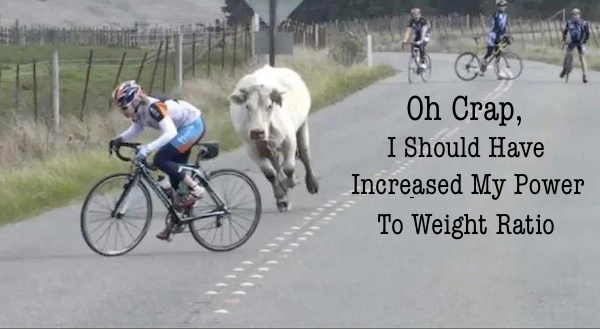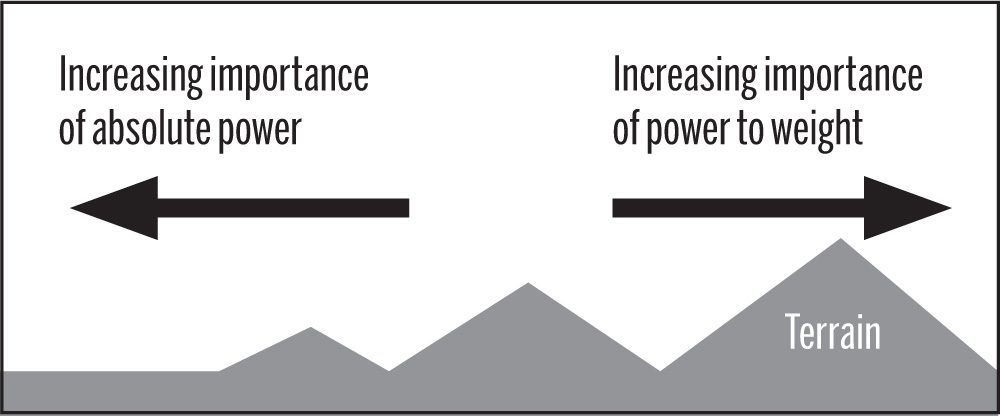Why Power to Weight Numbers?
Why did Andrew Coggin choose Power to Weight numbers? W/P numbers are an accepted metric for characterizing a cyclist’s training level, and actually tell us something about their ability to ride flats and hills. It also provides an excellent training target and particularly for climbing.

Getting the Units Straight
Before proceeding, we should clarify exactly what we mean by Weight in this computation. Weight in metric units is a force computed in Newtons, while body mass is computed in kgs. They are not the same. So am I dividing Watts by kgs or nwts.
This is another example of where Physics never got its act together in units. Kilograms are sometimes used to refer to force and sometimes to mass. Here, weight is actually referring to mass in kilograms and not in Newtons. The following is the conversion formula and this is what goes in the denominator:
m(kg) = m(lb) × 0.45359237
What do P/W tells us about riding ability?
Sprinters tend to be larger than climbers. Why? More massive riders are capable of generating more raw, absolute power. On the flats, gravity is a minimal factor and the ability to generate larger amounts of power more than compensates for the slight increase in rolling resistance and the need to be effective in body shaping to minimize drag. Absolute Power P wins on flats and P/W is less important.
On hills, gravity becomes the critical factor and P/W important. Consider two cyclists of equal absolute power abilities P, but with one weighting more than the other. Who has the easier time getting up the hill? Clearly the lighter one. The P/W of the cyclists would also suggest this. The heavier cyclist would have a lower ratio. Even if one cyclist had a higher P but weighed more, the increase weight can result in a smaller P/W and negate their power advantage.

So comparing cyclist’s P/W numbers suggest the higher P value wins on Flats and the higher P/W numbers wins on climbs.
Measuring your P/W Numbers
Measuring your W value is easy. Just step on a scale. Measuring your P numbers is a little more complicated. You have a couple of options. The first is you get into a lab environment and have them test your FTP levels, that is your power output for extended periods.
The other is to make a climb on a hill where you know the number of Joules of effort it takes. Then you time yourself and divide the Joules by your time in seconds to get your P.
When we get to discussing ascents, you will find that computing the number of Joules only requires your weight, the elevation gain, the distance to the top, and the hill slope. So getting this number is relatively easy and does require buying expensive add on devices.
Next Topic: Using the Coggin Table
